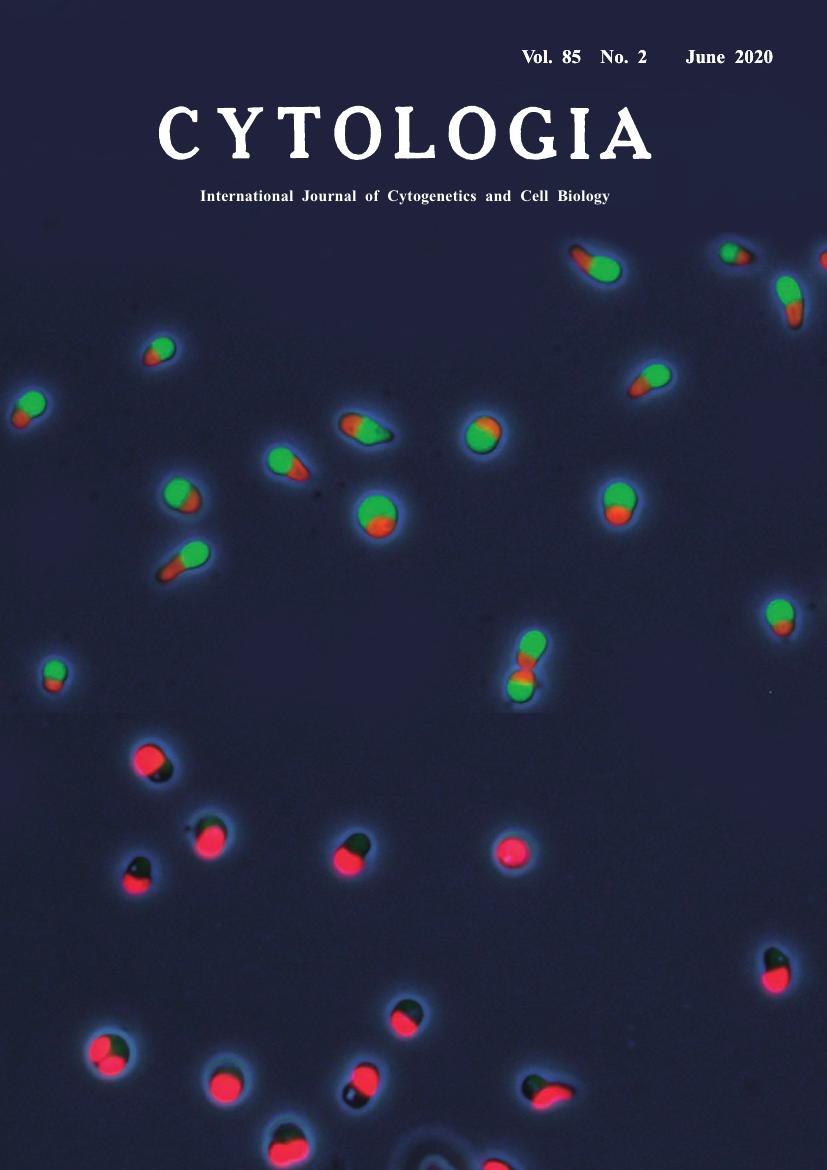| ON THE COVER |  |
||
|---|---|---|---|
| Vol. 85 No.2 June 2020 | |||
| Technical Note | |||
|
|
|||
An Inducible and Repressible Gene Expression System in the Unicellular Red Alga Cyanidioschyzon merolae Shin-ya Miyagishima1,2,3*and Takayuki Fujiwara1,2,3 1 Department of Gene Function and Phenomics, National Institute of Genetics, 1111 Yata, Mishima, Shizuoka 411–8540, Japan 2 Department of Genetics, The Graduate University for Advanced Studies, SOKENDAI, 1111 Yata, Mishima,Shizuoka 411–8540, Japan 3 JST-Mirai Program, Japan Science and Technology Agency, 4–1–8 Honcho, Kawaguchi, Saitama 332–0012, Japan
Unicellular algae potentially provide ideal experimental platforms for biological studies in several different disciplines and thus for inter-disciplinary studies based on the following features: (1) The chemical compositions of many kinds of media for algal cultivation are completely defined. (2) A unicellular algal culture often provides a homogeneous population in terms of cell types and surrounding environment (pH, temperature, light strength, and nutrient condition). This contrasts with land plants in which many different types of cells and tissues differentiate and each cell is exposed to a different environment. (3) Many species exhibit relatively simple cellular and genomic architecture. However, experimental techniques, particularly those for genetic modification, have been limited and thus have hampered the studies. Among eukaryotic algae, the unicellular red alga C. merolae, which was isolated from a sulfuric hot spring, has become an emerging model as follows (Kuroiwa et al. 2017). The nuclear and organelle genomes have been completely determined. Its relatively simple nuclear genome (16.5 Mbp; 4,775 protein-coding genes) with very low-genetic redundancy and simple cellular structure possessing one chloroplast, mitochondrion, and other organelles facilitates several omics studies. C. merolae lacks a rigid cell wall unlike many other algae and thus cellular contents are easily extracted for analyses. The cell cycle progression of respective cells in a culture can be synchronized under a 12-h light/12- h dark cycle and S and M phases take place during the dark period. In addition, the nuclear and chloroplast genomes can be edited by homologous recombination. C. merolae is an obligate photoautotroph, but we recently demonstrated that heterologous expression of a plasma membrane sugar transporter enabled the heterotrophic proliferation in the presence of glucose without photosynthesis. Thus, it is possible to produce photosynthesisdeficient mutants, for example, to study intra-organellar interactions based on photosynthesis. However, to study the mechanisms that are essential to cellular survival, inactivation or modification of the relevant genes will lead to lethal effects. To overcome this issue, we recently succeeded in developing an inducible/repressible gene expression system in C. merolae (Fujiwara et al. 2015). The expression of nitrate-assimilation genes such as nitrate reductase (NR), nitrite reductase, and the nitrate/nitrite transporter are reversibly regulated by their dependence on nitrogen sources. We constructed a stable strain in which a cassette containing the NR promoter and GFP gene was inserted into a chromosomal locus. When the cells were grown in the nitrate medium, in which NR promoter was activated, the green fluorescence of GFP was observed in the cytosol, in addition to the red fluorescence of the chloroplast, in all cells (top of the cover). In contrast, 24-h after the addition of ammonium to the culture, by which NR promoter was inactivated, GFP fluorescence disappeared as expected (bottom of the cover). Thus, by introducing any of these promoters to the upstream of an essential gene, it is now feasible to turn on and off the expression of the gene by exchanges of ammonium/ nitrate in the growth medium and determine their effects on the cells.
Fujiwara, T., Kanesaki, Y., Hirooka, S., Era, A., Sumiya, N., Yoshikawa, H., Tanaka, K. and Miyagishima, S. 2015. A nitrogen source-dependent inducible and repressible gene expression system in the red alga Cyanidioschyzon merolae. Front. Plant Sci. 6: 657. Kuroiwa, T., Miyagishima, S., Matsunaga, S., Sato, N., Nozaki, H., Tanaka, K. and Misumi, O. 2017. Cyanidioschyzon merolae: A New Model Eukaryote for Cell and Organelle Biology. Springer, Singapore. * Corresponding author, e-mail:smiyagis@nig.ac.jp DOI: 10.1508/cytologia.85.91 |
|||